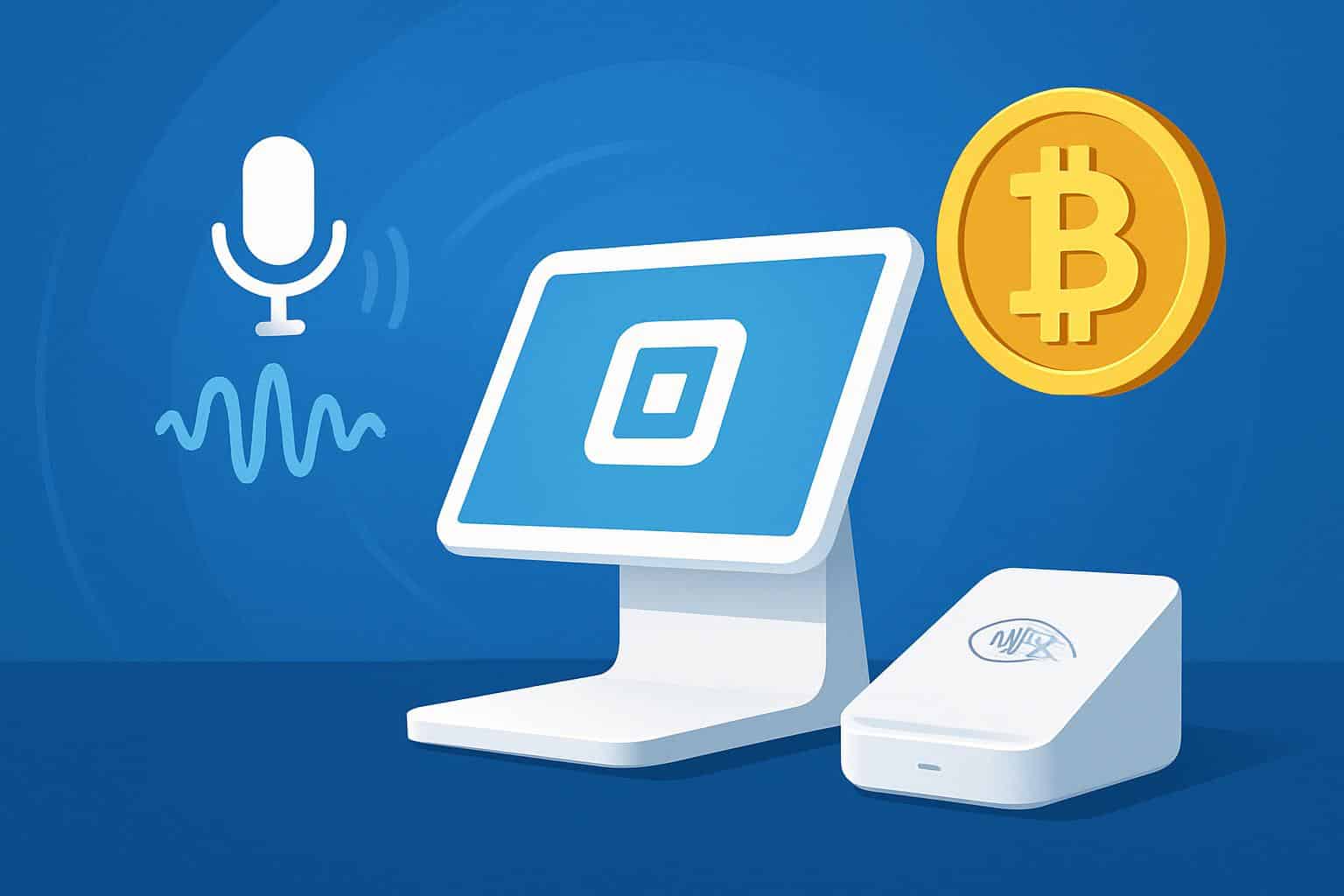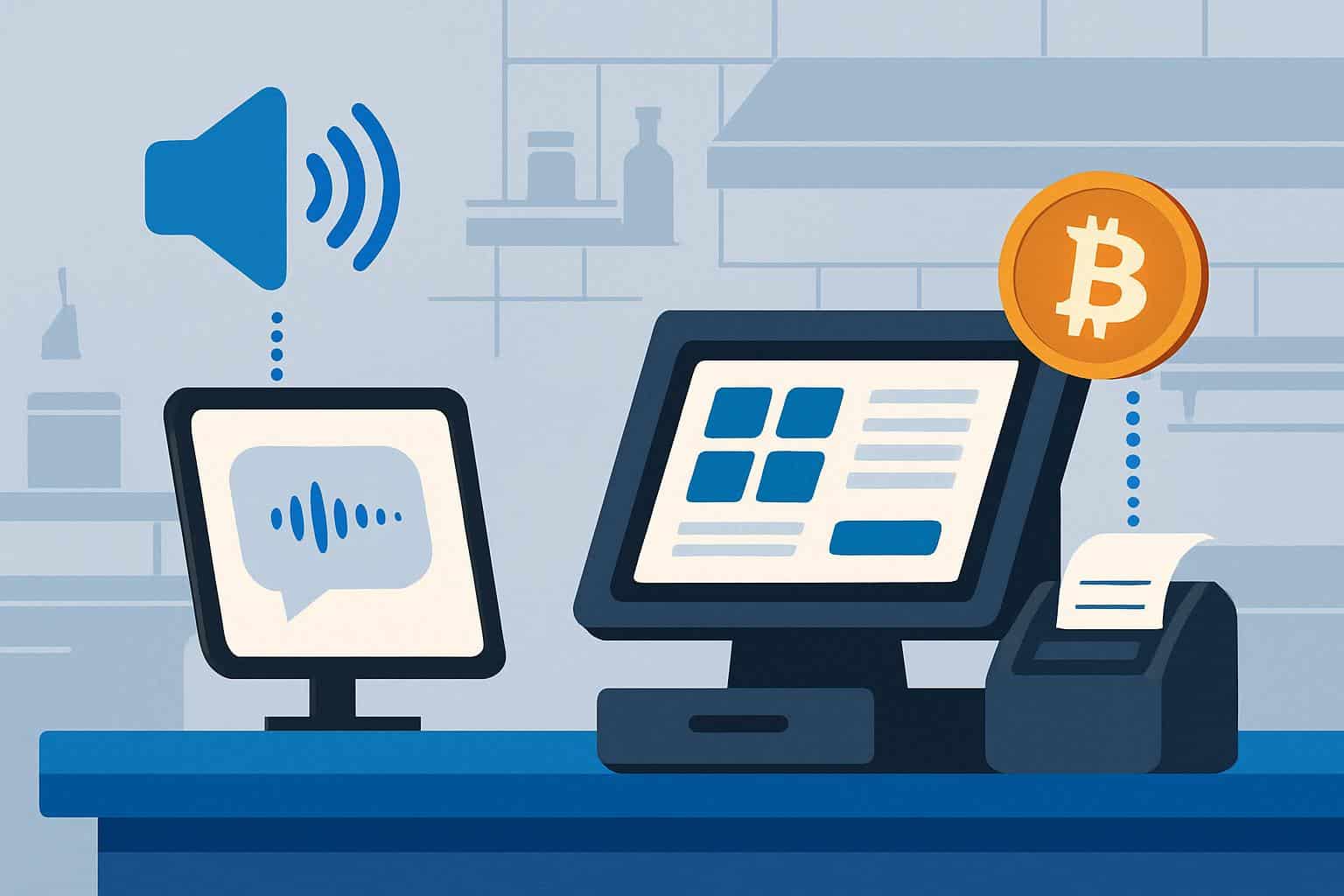And so Square is releasing two headline features for its merchant platform today: an AI-powered voice ordering system designed to allow restaurants to take orders by phone, and integrated Bitcoin capabilities that enable sellers to sidestep the messy world of digital wallets or exchanges in order to both accept and hold the cryptocurrency directly from their point-of-sale device. The company is also updating its AI assistant and kiosk software, with the goal of weaving together ordering, fulfillment and payments within one tightly integrated stack.
AI voice ordering arrives in restaurant kitchens
The new voice functionality takes incoming calls for restaurants and cafes, accepting menu questions, customizations, allergy notes and add-ons without occupying staff. It plugs into a seller’s existing Square catalog and payments, so the bot is able to quote actual prices, show when products are out of stock and accept payment on the spot. Delivery-first operations and cloud kitchens are set to gain the most since a high share of orders still come in by phone at peak hours.

Square offers a pitch of differentiation by integration. Though third-party voice solutions including those from companies like Yelp and Kea have been gaining traction in restaurants, Square can direct bot-captured orders directly into its POS, printers and kitchen displays, helping to alleviate re-entry errors and latency. The company is also introducing a new Grubhub integration for easier third-party delivery orders, some neat-looking kiosk functionality to help speed throughput and little touchscreen maintenance controls.
Inventory is also being given an AI upgrade. Its new product, Square says, uses sales velocity to predict stock requirements and anticipate needs — that means operators can avoid 86’ing menu items during peak times. The Square AI assistant (renamed from Appointments) had an open beta this year and acquires more situational context data, such as the weather, or events going on that affect demand—who knew rainy-day delivery spikes were a thing? Visualizations produced with the assistant can now be saved as auto-updating dashboard widgets, and merchants receive conversation history and a redesigned mobile dashboard for making decisions on the go.
Bitcoin acceptance at the register gets native support
On the crypto side, Square is launching a fully native Bitcoin experience: sellers can accept BTC in person, with no processing fee for the first year, and then it’s 1% starting in 2027. The embedded Square Bitcoin wallet enables merchants to both purchase and sell bitcoins, store them, or withdraw funds on their dashboard without having to use a separate exchange account.
The company is also increasing its conversion options. Following previous tests that allowed sellers to automatically convert a small portion of daily sales into Bitcoin, Square says merchants can now choose up to 50% of revenue. Program participants have cumulatively earned 142 BTC — worth over $17 million at current prices, according to an analysis conducted by the company — suggesting pent-up demand among some sellers.
Block’s two-sided ecosystem is a strategic fulcrum here. With Square on the seller side and a significant user base able to act as a buyer on its Cash App, the company can control both ends of a crypto transaction while keeping reconciliation and reporting similar for back-office teams. Executives frame the goal as turning Bitcoin payments into something as routine as card swipes, while unlocking treasury tools smaller businesses typically don’t have access to.

Why it matters for restaurants and retailers
Missed calls are missed revenue for restaurants in an ongoing tight labor market. POS-integrated voice automation takes orders during peak hours as well as after closing, cutting down on hold times and order-entry mistakes. Since staff and bot both see the same menu data, the bot can upsell in a crafty way (a robo-salesman!), honor modifiers like “extra spicy, no dairy” and kick to a human when nuance is required.
Operationally, merchants will measure success by methods like call containment and completion rates, average ticket size and speed to answer — metrics that Square can surface in its dashboards and the new, mobile view. Being able to forecast inventory based on real-world signals such as weather or local events could help prevent stockouts and over-ordering, two persistent margin killers.
For crypto-curious sellers, the calculus is around optionality and cost. A fee holiday reduces the risk of trial; integrated wallets and conversion rules assist with managing volatility and tax exposure. Accounting discipline still matters — finance teams will be seeking a clear accounting for gains, losses and settlement — but the one-stop workflow means much of the prior operational friction has been removed.
Adoption hurdles and key trends to watch next
Voice AI has to deal with real-world messiness: noisy kitchens, accents, ambiguous statements of intent and last-minute alterations. Human fallback and ongoing model tuning will be key, particularly for multi-location brands with a need for consistent performance. Call recording will open questions about data governance and privacy as call transcripts get woven into business analytics.
Bitcoin at the counter is still young. And while hundreds of merchants do take crypto online, a lot of Bitcoin activity is still trading-focused. A report from eMarketer forecasts that the number of U.S. consumers using cryptocurrency to make payments could increase by more than 7 times, to about 7.1 million in 2026 — a sizable group, but not yet one with mainstream appeal. Bitcoin-tilting sellers will require decisive treasury policies in place for when to hold and convert, and they’ll compare that crypto acceptance with familiar card rewards and chargeback protections.
There’s a near-term scorecard that is clear: adoption among current Square restaurants, call answer and containment metrics, kiosk engagement with the new UI, tap percentage of checkouts for the Bitcoin fee waiver. If Square can demonstrate real lift in orders and reduced service costs without having to increase staff, its new AI and crypto tools will look less like experiments and more like a cost of doing business in modern commerce.

